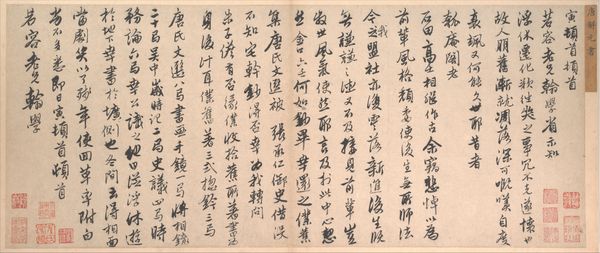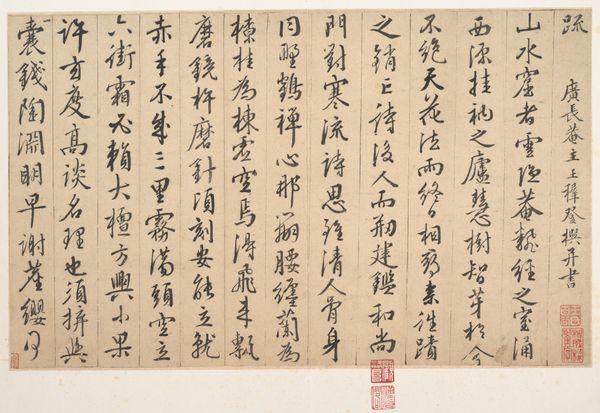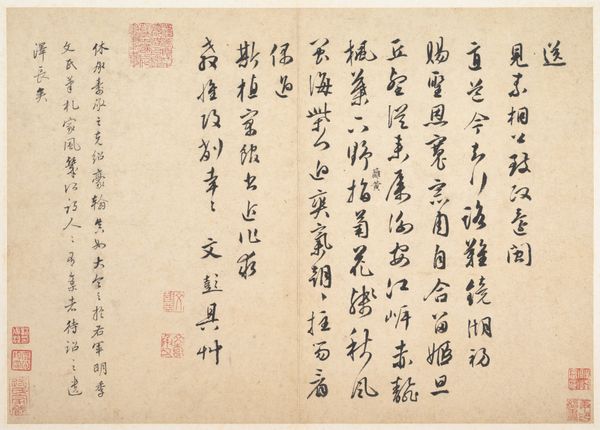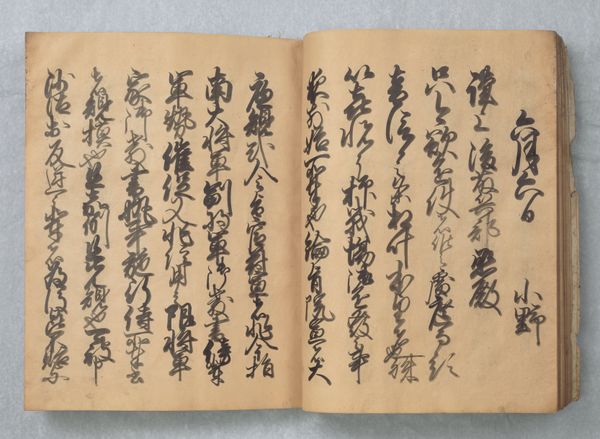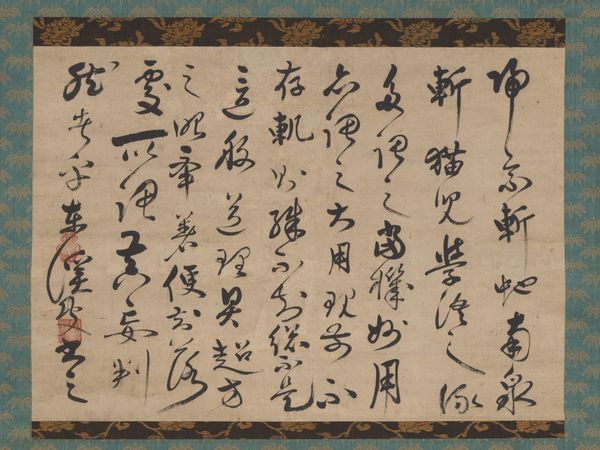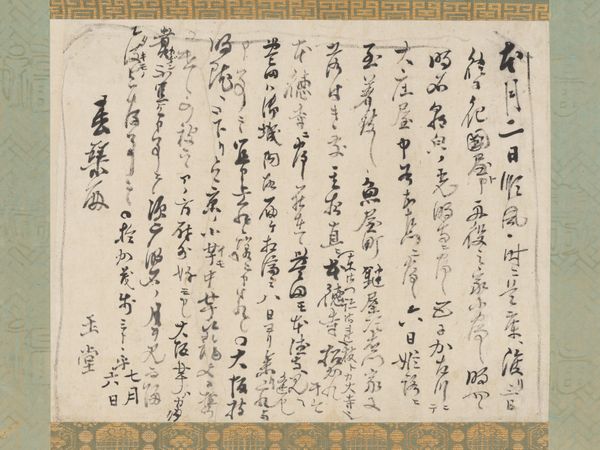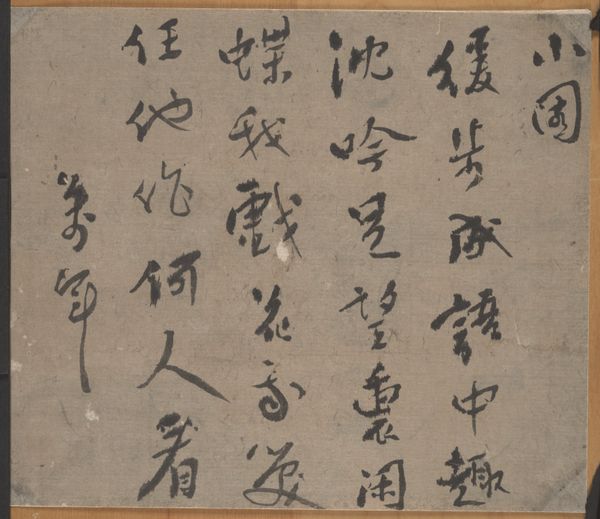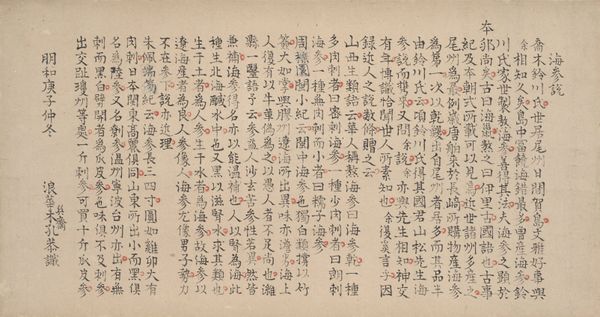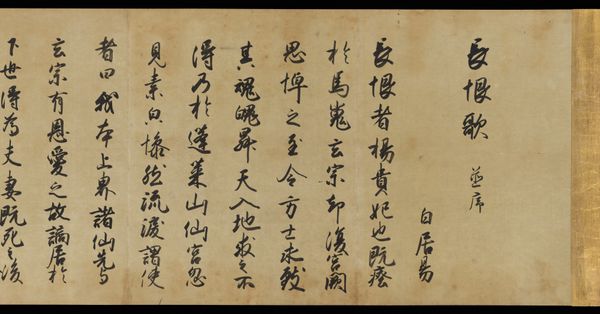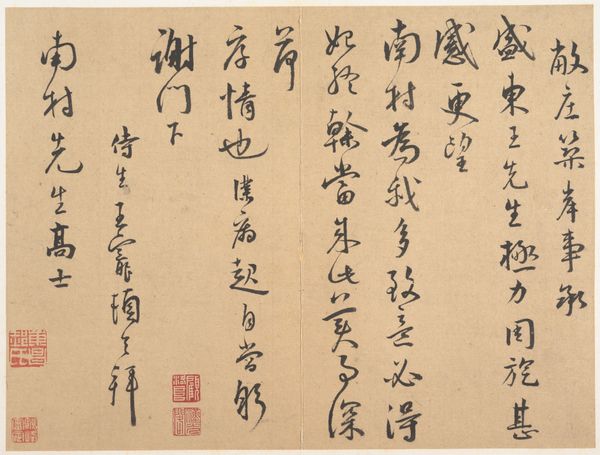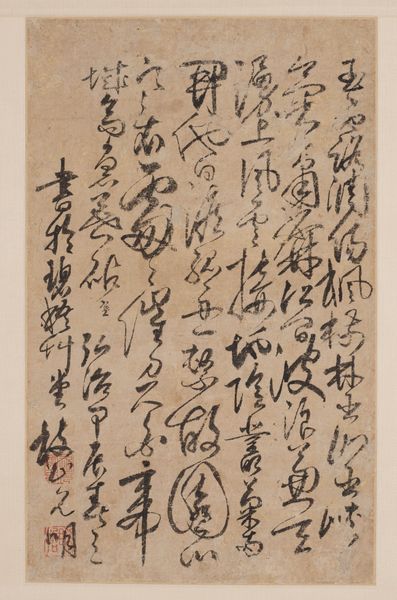
paper, ink
#
hand written
#
medieval
#
water colours
#
asian-art
#
paper
#
tea stained
#
personal sketchbook
#
ink
#
23_muromachi-period-1392-1573
#
calligraphy
Dimensions: Image: 12 1/4 × 16 5/16 in. (31.1 × 41.4 cm) Overall with mounting: 45 3/8 × 21 1/2 in. (115.3 × 54.6 cm) Overall with knobs: 45 3/8 × 23 3/4 in. (115.3 × 60.3 cm)
Copyright: Public Domain
Curator: Here we have Zekkai Chūshin’s "Letter to Monk Sekibyō," created sometime between 1392 and 1399. The piece is crafted with ink and watercolors on paper, currently held at the Metropolitan Museum of Art. Editor: It’s so delicate! The paper looks almost tea-stained with age, and the calligraphy feels so fluid. What I find fascinating is that this isn't just visual art, but also a functional object – a letter. What can you tell me about this piece? Curator: Well, consider the materiality itself. This isn’t some grand painting intended for display. It's a personal correspondence, meticulously rendered. The ink and paper become not just a medium, but a testament to the value placed on communication and relationship within that specific cultural moment. This work challenges our notions about high and low art, drawing attention to the labor and skill involved in even the most seemingly simple act of writing a letter. Editor: So, you're saying that the act of writing, the physical making of the letter, elevates it beyond just the content of the message? Curator: Exactly! Think about the socio-economic context. Who had access to paper and ink? Who was literate enough to craft such a letter? The letter itself becomes a symbol of status, education, and connection. It makes us consider what resources were consumed, whose labor was involved in producing them, and the social hierarchies at play. Editor: That's a fascinating way to look at it. I was focused on the aesthetic qualities, but thinking about the materials and the production process really opens up a whole new level of interpretation. Curator: Precisely. By looking at art this way, we realize it’s not just about appreciating beauty, it is about understanding the material conditions and social dynamics that shape its creation. Editor: I never thought about it that way before, considering the material production so directly. It really highlights the art historical significance beyond just its aesthetic value. Thanks for broadening my view!
Comments
No comments
Be the first to comment and join the conversation on the ultimate creative platform.
